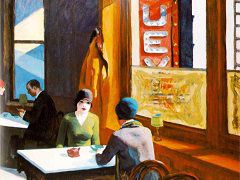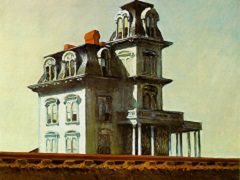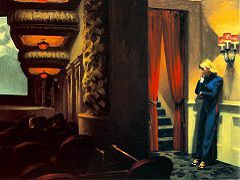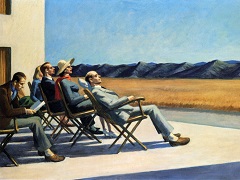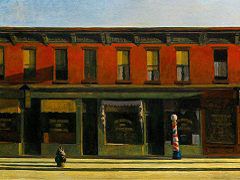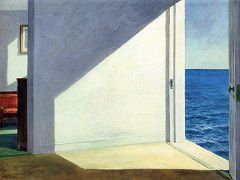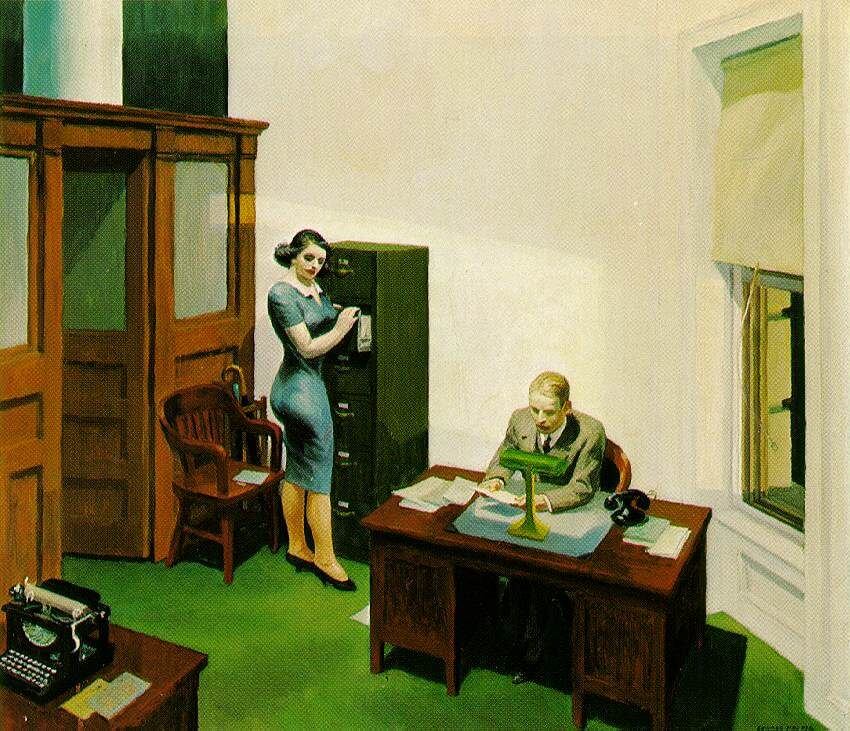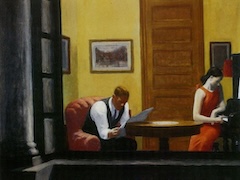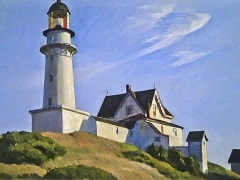Route 6, Eastham, 1941 by Edward Hopper
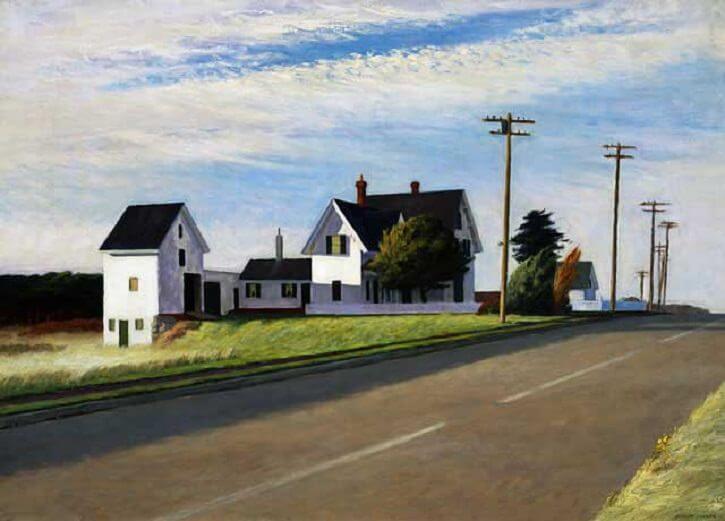
Hopper's scenic paintings also display the importance of light as a dramatic element. The mood in Route 6, Eastham depends on the special character of light at different times of day, the light also creating a common basis for architectural forms and natural phenomena. Architecture's geometric order and nature's more varied structure are brought together by the clearly delineated shadows, which, however, retain their transparency; the two spheres thus attain balance and harmony. It is obvious, however, that this balance can be achieved only by freeing the buildings from their human context. Lighthouses, farms, or living quarters are depicted not according to their function but rather according to their outward appearance in a natural context; the vertical thrust of the lighthouses is just as much related to the dynamics of the landscape as are the spatially differentiated elements and colors of the farmhouses. At the same time, however, we continue to associate these buildings with human activity. This consideration helps us to see that nature in Route 6, Eastham.



